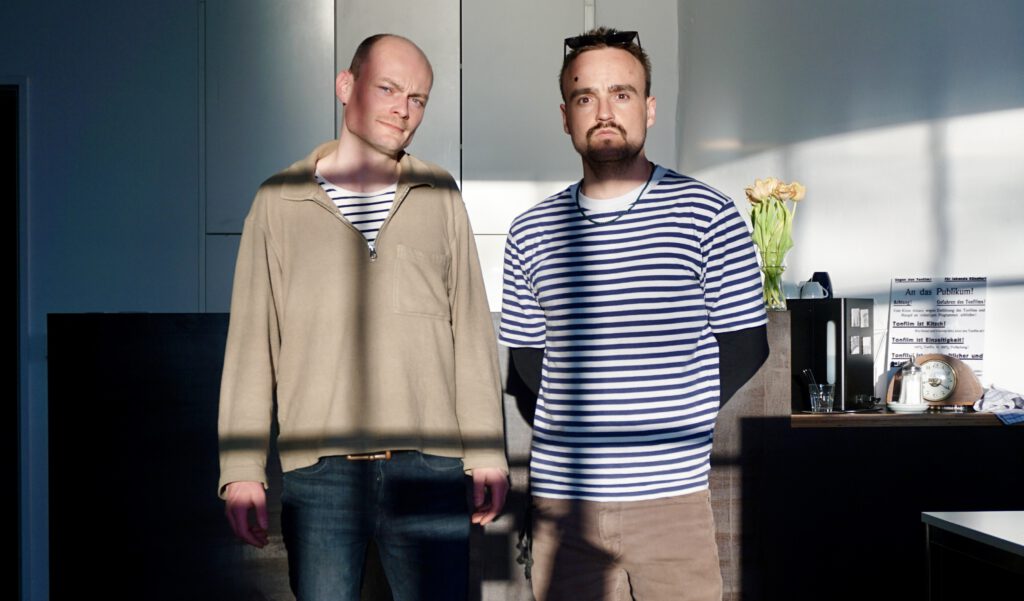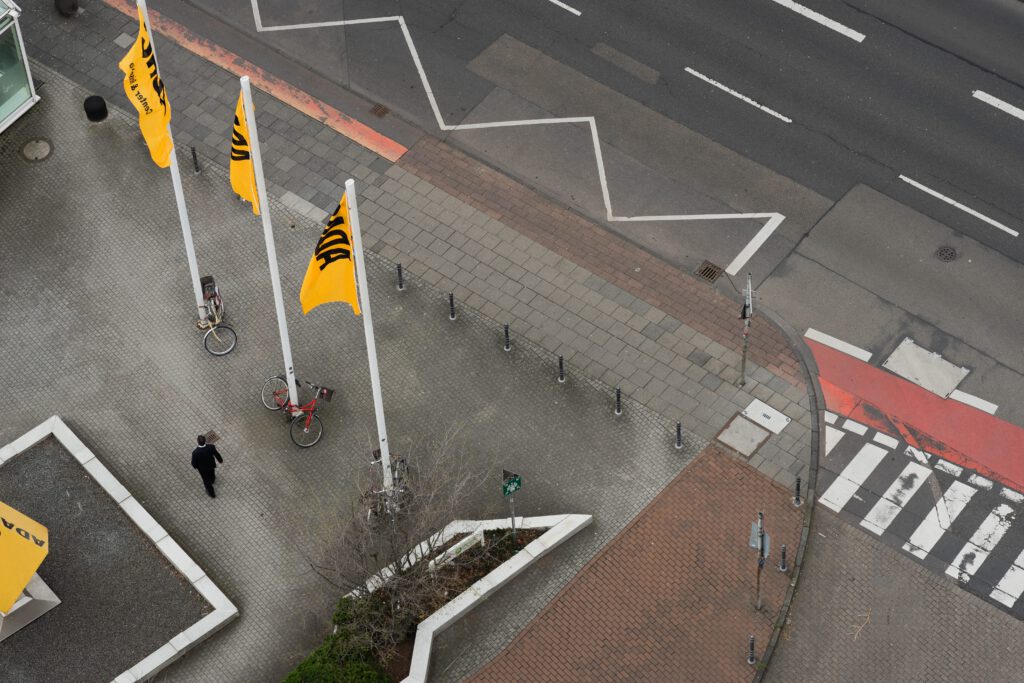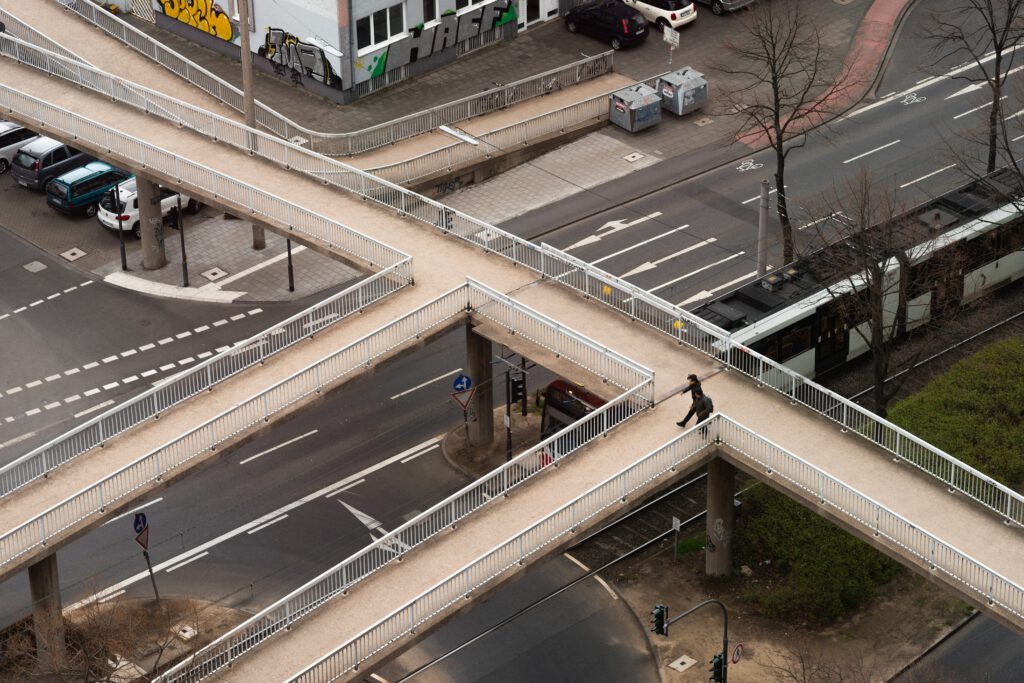In the Morning Light of Communication
You are welcome to the celebration of the start of our new collaboration – Studio Morgenlicht, the creative branch of Morgenlicht Technology. Using the Morgenlichts Automated Projection Technology, questioning and applying it as an interactive form of our view of the world – our art.
Light is the Method, the Metaphor
The name —Studio Morgenlicht— is no coincidence.
Morgenlicht is the awakening of a new day’s creativity, pioneering and naturally beautiful. It’s softer, slower, more curious. It doesn’t flood a room; it seeps in. It moves along edges, makes the surface of a building feel textured again. It gives a familiar scene a momentary strangeness. And above all, it changes things. Not radically, but subtly. Enough that you might look twice. Or pause.
That’s how we think of our practice. Light is not just what we work with—it’s how we work. We treat every material, every input, every image as something still shifting. Still subject to new readings. Just as morning light makes the city look new, our process aims to keep interpretation in motion.
How It Began
We didn’t set out to illustrate a theory. We began with a process. One of us created three photographs—quiet, observational, open-ended. The other responded—not with corrections or comments, but by reworking the images, shifting them, pushing them somewhere else.
We weren’t interested in seamless collaboration. We were curious about friction. About dialogue. About what happens when one perspective enters into conversation with another and neither comes out unchanged.
That initial exchange led to a series of transformed images. They now hang in Atelier 11 in Cologne’s Wachsfabrik. But more than a finished work, they represent a model—a way of thinking about communication, perception, and creative systems. What started as a practical warm-up became something like a lens: a way to explore how meaning moves, mutates, and is redefined when passed through different minds, tools, and media.
The photographs as the starting point of the conversation – city life and (infra) structure
Communication as a Creative Loop
The visual interpretation of the photography by PatMagoon. Noise becomes motion, order turns to texture — a symbiotic contrast between the precision of the built world and the organic unpredictability of data.
We’ve looked at classical communication theory. The sender transmits a message; the receiver decodes it. In between, there might be noise—an unwanted interference.
But what if noise isn’t a problem?
In our first project, one of us acted as the sender, offering a visual message in the form of photographs. The other, supposedly the receiver, didn’t just decode the message. They interfered with it. Actively. Willingly. The “noise” wasn’t background disturbance—it was the work itself.
We see communication not as a line, but as a loop. A message moves, then mutates. Roles shift. The receiver becomes the sender. Interpretation becomes creation.
Marshall McLuhan’s idea that “the medium is the message” resonates here. The photograph as medium carries a different message than the reinterpretation—be it collage, painting, or spatial transformation. The medium we choose doesn’t just express a thought; it shapes it. A camera filters the world one way. A hand, a brush, or a layer of digital disruption filters it another.
Our process reveals that transformation as part of the message itself. Every interference, every reinterpretation is a statement—about how meaning is never stable, never one-to-one.
Between the Analog and the Digital Self
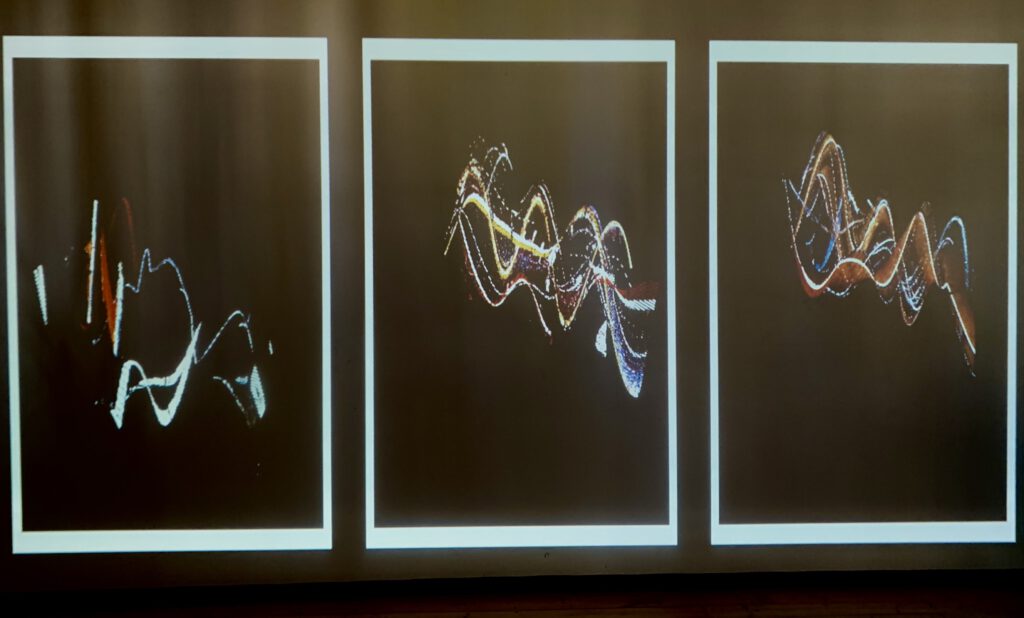
Reprojections of the three artworks
Working with images means working with identity. Whether we intend it or not, every photograph, every transformation, every shared work becomes a kind of self-portrait. But in a time shaped by media, that self is never singular.
Philosopher Vilém Flusser wrote that photographers are functionaries of the apparatus—they operate within a framework set by the machine. The device determines what can be seen. There’s a limit to freedom when the tool is already thinking for you.
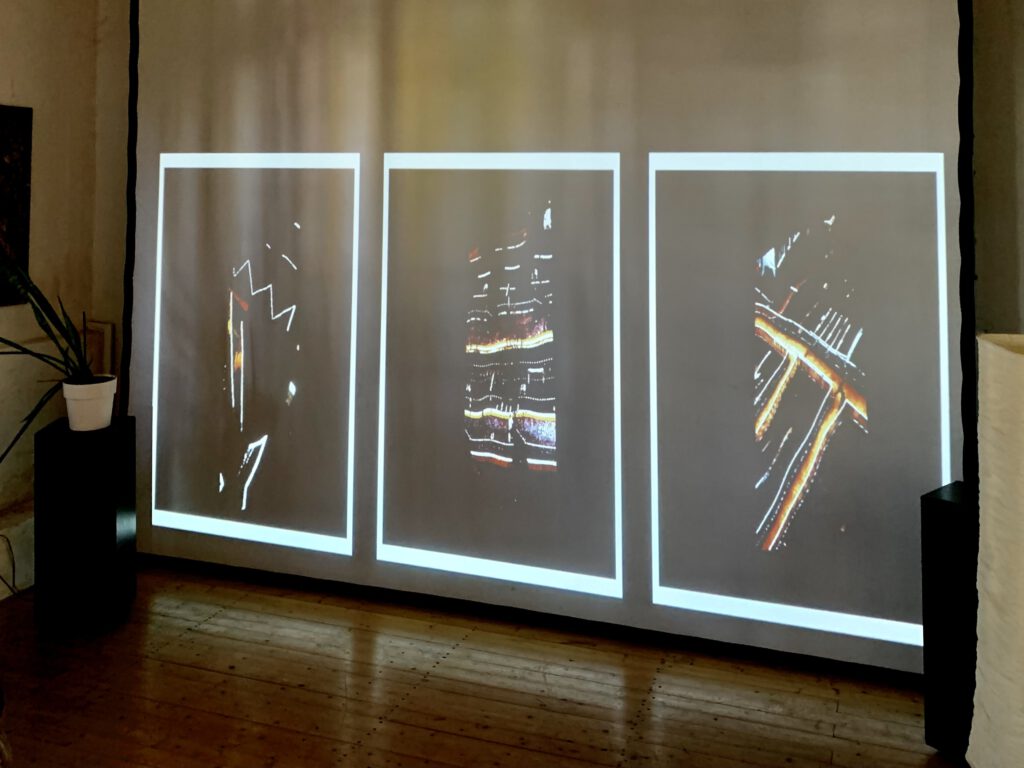
That resonates with us. In our structure, one part is shaped by that apparatus: a camera, a format, a captured reality. The other part intervenes, breaks the frame, brings in the body. Reworking becomes an act of resistance. Not against technology—but against the idea that technology always gets the last word.
We’re aware we exist between two poles: the digital and the analog. The encoded and the improvised. The mechanical and the intuitive. Like Haraway’s cyborgs, we are already hybrids—filtered through tools, but still responsible for what we make with them.
Our work doesn’t try to hide that. It uses it. It stages the tension between system and instinct. Between seeing and feeling.
Shared Interpretation as Democratic Space
That first series—the one that started with three photographs—became our way of asking: What is it we’re doing here? Why work like this?
Our answer keeps changing. But for now, it sounds like this:
— We treat interference as a method, not a flaw.
— We see every image as subject to change.
— We work with light, not to reveal a truth, but to shift how things are seen.
— We believe collaboration doesn’t mean merging—it means allowing different logics to coexist.
— We don’t seek agreement. We seek friction that leads to clarity of a different kind.
Studio Morgenlicht is our way of holding space for that kind of thinking. That kind of making. That kind of looking.
And like morning light, we try to move gently—sideways, unpredictably, but always with the potential to change the way something familiar appears.
Studio Morgenlicht works with Light.
Not to reveal truth -
but to shift how the world is seen
Thanks for dropping by
Paul (patmagoon) and Tim from Studio Morgenlich
